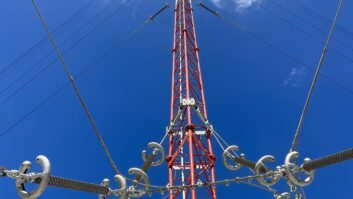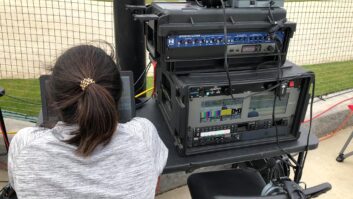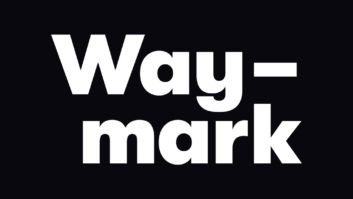IBOC Update – Feb 9, 2005
Feb 9, 2005 2:57 PM, By Mark Krieger, CBT

Index:
- DRM Live at Le Radio! Conference in Paris
- NRSC Forms Two Task Forces
- XM and Nissan Ink Data Service Agreement
- TI and Radioscape to Provide Technology for DRM
- Continental Electronics Licenses HD Radio Technology
- Radioscape to Offer DAB Modules
- Ibiquity, Phillips Extend Receiver Chip Agreement
- Kahn Takes His Crusade to the Net
- IBOC Across America
HD Radio Terminology
Dielectric Introduces Hot-Switchable IBOC Combiner To receive these articles twice a month in your e-mail, subscribe to the IBOC Update – Insight on HD Radio e-newsletter. Click here to subscribe
. News DRM Live at Le Radio! Conference in Paris Digital Radio Mondiale consortium is showcasing live broadcasts Feb. 6-Feb. 9 at Le Radio! at DRM’s booth in the Paris Expo. During the conference, Le Radio! participants have the opportunity to hear DRM broadcasts on the medium- and short-wave bands using existing consumer and software receivers.
The Jan. 31 announcement from DRM members TI and Radioscape accelerates the timeline for development of a range of DRM consumer receivers with combined DRM, DAB, FM and AM capabilities. The World DAB Forum and DRM announced their cooperation in markets of mutual interest in 2003. DRM’s European commercial launch will take place later this year.
“France is a key market for DRM, and DRM is a key digital solution for AM in France,” said Michel Penneroux of TDF, DRM’s Commercial Committee Chairman. “The French government is backing digital media–digital television broadcasts have just begun, and digital radio is next.”
Some of the features at the DRM display at Le Radio! this year include: Mayah’s DRM 2010 receiver, a second generation receiver. It is a joint development by Coding Technologies, BBC R and D, and DRM Supporters Mayah and AFG Engineering GmbH.
DRM Member BBC will display DRM transmissions from the UK to France on short-wave, including an audio-on-demand service. The BBC will also demonstrate a data service that connects to the DRM 2010 via USB.
A demonstration by TDF of live, local medium-wave transmissions and a software receiver.
The Digital World Traveller from DRM Member Coding Technologies: It is a small, USB device that connects to a PC or a laptop without needing any additional power supply or battery. It comes with the Digital World Traveller Radio Software, and can receive DRM, FM and AM programs. NRSC Forms Two Task Forces With the IBOC rollout gaining momentum, the work of the National Radio Systems Committee DAB Subcommittee is shifting its focus from the establishment of voluntary standards to implementation issues and new applications for the technology. This trend became apparent during NRSC meetings held on Jan. 7 at the 2005 International Consumer Electronics Show (CES) in Las Vegas, when the NRSC formed two new tasks group that report to the DAB Subcommittee. The newly established Surround Sound Audio Task Group and the Supplemental Audio Service ID Task Group will study and report on the potential benefits of these developing technologies.
The Surround Sound Audio Task Group (SSATG) was formed to look into the burgeoning surround sound audio industry spawned by the introduction of IBOC digital radio. Currently there are four groups pursuing surround sound technology for use with FM IBOC. The four groups are: Neural Audio with Harris
www.neuralaudio.com
SRS Circle Surround
www.srslabs.com
Omnia Audio with Fraunhofer and Agere
www.telos-systems.com
Orban with Coding Technologies
www.codingtechnologies.com The Ibiquity HD Radio system is capable of supporting several surround sound techniques, and the new NRSC surround sound task group plans to study these techniques to see if an NRSC recommendation on surround sound would be beneficial.
The second new task group, the Supplemental Audio Service ID Task Group (SIDTG), was formed to look into the issue of how broadcasters and receiver manufacturers might label multiple audio services. The HD Radio system supports multiple audio channels for a broadcast signal, but no common approach for system identification has been made. Jeff Littlejohn, senior vice president of engineering for Clear Channel, and Jeffrey Marrah, RF design manager for receiver manufacturer Delphi, were selected as co-chairs. Business XM and Nissan Ink Data Service Agreement XM Satellite Radio has announced that Nissan North America has chosen XM to supply satellite-delivered data and telematics services, such as in-vehicle messaging and XM Navtraffic, which delivers current traffic information to properly equipped Nissan and Infiniti vehicle navigation systems.
Nissan currently offers XM radios as an accessory option on all models of Nissan and Infiniti vehicles (18 models total), including the Nissan Sentra, Altima, Maxima, Quest, 350Z Coupe, Murano, Armada, Pathfinder, Frontier, Xterra and Titan, as well as the Infiniti FX35/45, G35 Sedan, G35 Coupe, M45, Q45 and QX56. TI and Radioscape to Provide Technology for DRM Building on its previous development in digital radio technology, semiconductor specialist Texas Instrument is now working with Radioscape to develop hardware and software support for Digital Radio Mondiale (DRM). With the benefit of experience garnered from product development with Eureka 147 DAB and Ibiquty’s HD Radio platforms, TI plans to supply the DSP processing power for use with Radioscape’s software radio technology. Together, the companies hope to offer a cost-effective platform for consumer receiver design.
“We know what it takes to succeed in an emerging digital radio market,” said Les Mable, business development manager for digital radio at TI. “TI is committed to the promising new DRM market and will leverage our expertise to help provide the innovation required to speed its rapid adoption. The use of Radioscape’s software-defined radio solutions will allow a single cost-effective hardware platform to receive DRM, DAB, FM and AM broadcasts.”
Formed in 1998, the DRM Consortium has defined a universal, non-proprietary digital system for providing near-FM quality sound on the broadcasting bands below 30MHz. With members in more than 25 nations, DRM applications include fixed and portable radios, car receivers, software receivers and PDAs. With some broadcasters already on air, the initial deployment of receivers is expected to start in the UK, Germany and France.
DRM enables a transmitter on LW, MW or SW to transmit national and even continental borders, so listeners in multiple nations can receive the same digital signal. DRM is expected to drive expansion of the under-30MHz radio market, bringing new content to larger audiences while fitting within the current broadcast band plan. Continental Electronics Licenses HD Radio Technology Ibiquity Digital has licensed Continental Electronics to develop, manufacture and market HD Radio exciters.
Sources say that the company plans to display its new offerings, including a linearized version of its newest solid-state FM transmitter, at the NAB convention this April in Las Vegas. Radioscape to Offer DAB Modules Radioscape is expanding its business to include the direct supply of its DAB modules. Until now, the company licensed its designs to third-party manufacturers who built and supplied the modules to radio OEMs. The new modules will be manufactured by a sub-contractor in China.
“Customers want a one stop shop,” said Nigel Oakley, Radioscape’s vice president of marketing. “Now they have one point of contact for custom software, hardware design and ordering goods.”
Radioscape is a developer of digital radio applications founded in 1996 and headquartered in London. Its investors include Royal Bank Ventures, Atlas Venture, Scottish Equity Partners, JAFCO, Texas Instruments, Yasuda Enterprise Development, iGlobe Partners, Psion and NTL. Ibiquity, Phillips Extend Receiver Chip Agreement Ibiquity Digital has signed an agreement with Royal Philips Electronics’ semiconductors division, which includes the development of next-generation Philips HD Radio baseband chips designed to succeed its SAF3550 IC currently in the marketplace.
“Philips next-generation HD Radio baseband chip will provide our partners with another excellent option when designing HD Radio receivers and ultimately lead to lowered cost HD Radio consumer products,” said Ibiquity CEO Jeff Jury.
A recent survey of digital radio consumers suggests that the average price of HD Radio-capable receivers may have to fall significantly below current levels before large numbers of consumers will consider purchasing them. Kahn Takes His Crusade to the Net Long-time radio engineer and AM proponent Leonard Kahn is once again on the offensive against industry and regulatory adoption of the Ibiquity HD Radio standard. Kahn, well known to many industry insiders as a technical innovator and maverick, has chosen the Internet as the arena in which he’ll advance the virtues of his thus-far elusive Cam-D AM IBOC digital delivery system, while continuing to decry adoption of Ibiquity’s HD Radio.
But if you’re expecting a major revelation regarding Cam-D’s technical parameters, your visit to www.wrathofkahn.org
may prove less than illuminating. So far, the website contains only a short mission statement by Kahn, and a testimonial on behalf of the Cam-D system by Ralph Carlson, president of Carlson Communications and licensee of KDYL-AM, which is licensed to South Salt Lake, UT, on 1060KHz. Carlson’s only clear reference to the actual performance of Cam-D, which is apparently now running on KDYL, is that it has a “clean digital signal.”
The website also promises pending reports on Cam-D operation from KOLE 1340 in Port Arthur, TX, and KRCM 1380, in Beaumont, TX.
According to third-party anecdotes, Cam-D is an attempt to build on Kahn’s earlier developments in analog AM stereo technology by adding a relatively low-rate data signal that would carry additional high frequency information not achievable in the analog domain due to limitations imposed by the NRSC spectral mask. Precisely by what means Cam-D’s digital stream is compressed, encoded and extracted is unclear, and is described only as “proprietary.” IBOC Across America IBOC By State: Louisiana
Ibiquity has a list of stations that have licensed HD Radio technology and notes those that are on the air now. IBOC by State will look at various states and list the stations that are making the transition.
Station Format Market Owner On Air KRVS-FM 88.7 Variety Lafayette University of Louisiana at Lafayette No WWNO-FM 89.9 Clscl/NPR New Orleans WWNO-FM – University of New Orleans Yes WWOZ-FM 90.7 Variety New Orleans WWOZ, Inc. Yes
HD Radio Terms The language of HD Radio
D/U: Ratio of desired to undesired signals (usually expressed in dB).
PAC: A flexible high-quality perceptual audio coding system originally developed by Lucent Technologies and later refined by Ibiquity. The system can operate over a wide range of bit rates and is capable of supporting multichannel audio. Products Dielectric Introduces Hot-Switchable IBOC Combiner Dielectric Communications has introduced an RF combiner that will combine high-level analog and dual sideband digital signals into a single antenna or load. Because the HDR Dibrid IBOC combiner does not use switches, it permits hot switching that keeps broadcasters on the air as functions are changed. According to the manufacturer, the new product may also extend the operating life of transmitter components.
“Prior to the introduction of our Dibrid, radio stations had to use fixed combiners and a number of switches to provide HD Radio broadcasts,” said John Chapman, vice president of Dielectric’s broadcast products. “This was an inflexible solution, and anytime there was a transmitter issue that required the broadcaster to change functions, the station had to go off the air. Our new Dibrid combiner applies conventional components from pre-existing military technology to provide broadcasters with a more versatile way to change functions without an interruption in service.”
The HDR Dibrid also claims to streamline broadcast operations by incorporating an on-board control for local or remote operation, allowing broadcasters to change functions on the Dibrid without traveling to the transmitter site.
Dielectric delivers the Dibrid as a stand-alone unit with two inputs and two outputs. Depending on the function, one transmitter or a combination of the two can be connected to the combiner’s inputs, while one output is attached to an antenna and the other to a station dummy load. Transmission modes can be set up to direct the analog transmitter, digital transmitter or a combination of both in a variety of different ratios to the antenna, with the residual power directed to the station load.
More information is available on the Dielectric website at www.dielectric.com
. To receive these articles twice a month in your e-mail, subscribe to the IBOC Update – Insight on HD Radio e-newsletter. Click here to subscribe
.












